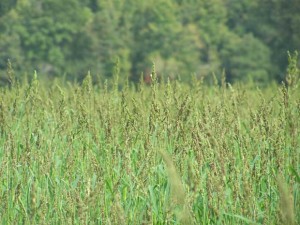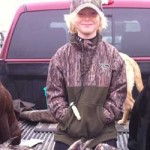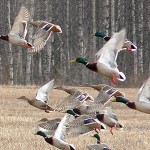This story is part of an ongoing series of stories that first appeared in Arkansas Wild, published by Arkansas Times, Inc., and is available on newsstands in Central Arkansas. You can order your FREE copy of the next issue of Arkansas Wild as an ebook from Sporting Life Arkansas today. We expect the issue to be ready by the end of February, and we will deliver it to you via email. To order, click here or on the Arkansas Wild icon within this story.
By Andi Cooper, Ducks Unlimited
Living up to its name as the Natural State, more than 1.1 million Arkansas residents and 1.3 million non-residents participated in wildlife-associated recreation in Arkansas last year. Many of these people took advantage of the spectacular public lands across the state to hunt, fish and watch wildlife. Without the essential ingredient of habitat, wildlife would not be available for such recreational pursuits. This basic principle – that habitat drives and supports wildlife populations – is the fundamental belief underpinning Ducks Unlimited’s conservation work for 75 years.
Although Ducks Unlimited’s primary mission is to conserve North America’s waterfowl habitats, the second part of the mission statement says, “These habitats also benefit other wildlife and people.” Fortunately, in addition to producing and supporting ducks, many Ducks Unlimited habitat projects also provide places to hunt ducks, deer, turkeys and other game. Of the more than 70 conservation projects on Arkansas public lands in which Ducks Unlimited has been involved, most are open to public hunting.
In Arkansas, Ducks Unlimited has worked to enhance habitat on every public land managed for waterfowl. And Ducks Unlimited continues to work with public land partners like the Arkansas Game and Fish Commission (AGFC) and the U.S. Fish and Wildlife Service (USFWS) to ensure not only habitat for waterfowl, but also public hunting opportunities for waterfowl hunters.
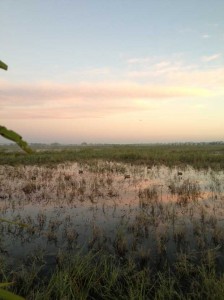
Eastern Arkansas
One example of a project that is a clear win-win for waterfowl and waterfowler alike is the Steve N. Wilson/Raft Creek Bottoms Wildlife Management Area (WMA) in east Arkansas. A partnership between Ducks Unlimited, AGFC, the USDA Natural Resources Conservation Service (NRCS) and others brought this 4,063-acre wetland area into public ownership in 2000. The dual objectives of the project were to conserve and restore an important part of the White River wetland system, one of the most important wintering areas for waterfowl in the Mississippi Flyway, and to provide public hunting opportunity.
The new WMA enabled AGFC to experiment with ways to improve the quality of public waterfowl hunting, something in which many public-lands hunters in Arkansas expressed interest. Hunting on Raft Creek WMA has been good so far, and hunters have been pleased with the overall quality of the hunting experience. Hunter harvest during the 2011-12 duck season at Raft Creek WMA exceeded three ducks per person per day – a testament to excellent management by AGFC staff and the quality of hunting available. Raft Creek is slated for more habitat improvements this spring through a cooperative effort between Ducks Unlimited, AGFC and NRCS.
The same partnership effort will improve waterfowl habitat on Bell Slough WMA this spring as well. Bell Slough WMA offers residents of Little Rock and Conway a convenient opportunity to get out and enjoy more than 2,000 acres of woodlands and wetlands. The Palarm Creek Rest Area offers birders and photographers excellent opportunity to view waterfowl, shorebirds and neotropical migrants while providing important habitat for waterfowl that can be hunted elsewhere on the WMA.
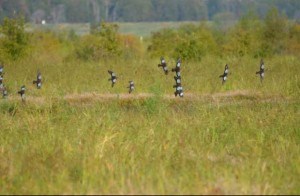
Central Arkansas
In just the past year, Ducks Unlimited and AGFC have partnered to restore hydrology on approximately 125 acres at Lee Leblanc Rest Area on Black Swamp WMA in east central Arkansas. Black Swamp WMA is situated adjacent to Cache River National Wildlife Refuge (NWR), providing a large block of important bottomland hardwood forest and moist-soil managed habitats. Restoration efforts funded in part by a North American Wetlands Conservation Act (NAWCA) grant include new water control structures, a new electric pump and power line.
Ducks Unlimited recently partnered with the AGFC to enhance 80 acres of moist-soil habitat at Holland Bottoms WMA between Jacksonville and Cabot in central Arkansas. Development of this important wetland area was also made possible by NAWCA funding. Enhancement efforts involved renovating existing levees, installing new water control structures and modifying drainage features in two moist-soil units to maximize water management capabilities for waterfowl. While managed as a rest area by the AGFC, these moist soil areas provide critical resting and foraging habitat for migrating and wintering waterfowl, as well as numerous shorebirds that migrate through the area each fall and spring. Many area birders enjoy watching ducks and shorebirds on the WMA from the south levee of Lake Pickthorne. Waterfowl hunters will also enjoy the area’s location next to a popular green timber hunting area open to the public.
In partnership with the USFWS, Ducks Unlimited has delivered habitat improvements on several national wildlife refuges in Arkansas as well, including the Cache River NWR. Channelization of the lower seven miles of the Cache River in the 1970’s caused local conservationists and hunters to call for a halt of further alterations to the river. The preserved portion of the Cache became the Cache River NWR, one of the most critical areas for wintering mallards in the country. As one of the few remaining areas in the Lower Mississippi River Valley not drastically altered by channelization and drainage, the Cache River basin contains a variety of unique wetland communities, including some of the most intact and least disturbed bottomland hardwood forests in the Mississippi Valley region.
In 2004, Ducks Unlimited, AGFC and the Corps of Engineers came together to call for a $7.5-million project to restore the lower portion of the Cache River. The Nature Conservancy (TNC) joined the partnership and agreed to raise the money needed for match and full project funding. This project has been identified as a pilot project within the America’s Great Outdoors Initiative. A portion of the lower 7 miles is slated for restoration in 2013. Ducks Unlimited, TNC, AGFC and other conservation partners are calling for full restoration of the lower section under this national initiative.
Most recently, Ducks Unlimited partnered with USFWS staff on Cache River NWR to restore almost 300 acres of moist-soil habitat at Plunkett Rest Area and Dixie Farms Hunt Area near Little Dixie. Funded in part through a NAWCA grant, the restoration work at Plunkett Rest Area provides increased management capability and improved water delivery. Similar work at the Dixie Unit will improve two existing moist-soil units and add a new unit opened to public hunting. Rest areas are important to ensure waterfowl have sufficient opportunity to feed and rest, particularly in late winter and early spring, but they also enhance hunting opportunity on adjacent areas as waterfowl wing their way to and from these havens.
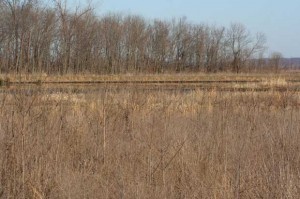
Western Arkansas
Ducks Unlimited is also working with AGFC and NRCS to enhance waterfowl habitat on Frog Bayou WMA this spring. Frog Bayou is Arkansas’s newest WMA, established in 2005 in partnership with Ducks Unlimited, AGFC and NRCS. Frog Bayou WMA offers excellent waterfowl hunting in western Arkansas and important waterfowl habitat along the Arkansas River. Connecting the Central and Mississippi Flyways, the Arkansas River serves as a corridor for waterfowl winging their way from the prairies through Oklahoma and on to the Mississippi Alluvial Valley.
To learn more about Ducks Unlimited’s work in Arkansas, check out www.ducks.org/arkansas.
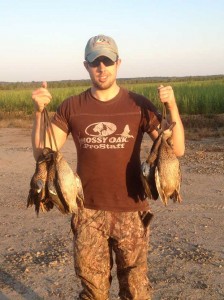
Hunting public lands
For those willing to work for their birds, good public hunting is available across the Natural State. In fact, Arkansas has some of the best public waterfowl areas in the country. The reputation of Bayou Meto WMA, for example, is known far and wide, which tends to draw large crowds and heavy hunting pressure. However, there are some areas of Bayou Meto WMA that are overlooked, and days when pressure is significantly reduced. Hunters willing to put in the effort can find quality hunting opportunities on Bayou Meto WMA. Other public lands in Arkansas are often underutilized by waterfowl hunters, providing additional chances for a great hunting experience.
Public land hunting can be a nightmare or a dream come true, and much of that depends on preparation and timing. Here are a few strategies that can assist in making the most of these opportunities.
As with most hunting, scouting is an integral part of successful waterfowling. However, due to the migratory nature of waterfowl, it’s equally as important to scout habitat as it is to scout where the birds are at any given time. Knowing where waterfowl foods are in abundance, though they may not yet be flooded and available for waterfowl, is critical. Be familiar with how different river stages flood various huntable areas on surrounding public lands like the White River within the White River NWR. Heavy rains can also flood new areas, making fresh food supplies available for migrating and wintering ducks. As new areas with strong food supplies are inundated, waterfowl will pour in to utilize the newly available foods. If you’ve done your homework, you can be there waiting for them.
Know the regulations
Knowing and abiding by state, federal and other regulations is the responsibility of each hunter. Many public lands have regulations specific to that area in addition to standard state and federal migratory game bird laws. These most often have to do with days and times of allowable hunting, but also include blind assignment procedures in some places.
Time it right
Arriving early to hunting areas managed on a first-come, first-served basis will ensure you get a great spot. If you have the flexibility, hunting on weekdays makes your competition lighter as many folks have to be at work. Some public areas have rest days, when hunting is not allowed. Researchers have shown that hunting success is greatest on days immediately following rest days, so schedule your hunts on those days if possible. Though many public lands in Arkansas require hunters be out of the area by 1:00 p.m. to allow ducks to settle in for the afternoon, staying well into the morning can increase your success. In heavily hunted areas, waterfowl will often fly later in the morning, when many hunters have prematurely called it a day.
Remember the Golden Rule
Demonstrating basic consideration for others certainly applies to hunting on public areas. In all regards, treat others as you would like to be treated. Don’t sky-bust, block ramps because you’re not fully ready to launch or encroach on other hunters already set up. Respectful behavior will translate into better hunting and greater pleasure for all who share an area.


